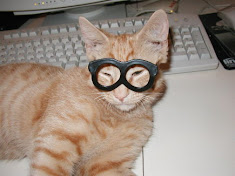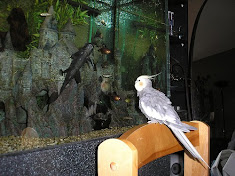In doing some web surfing looking for interesting things about horses, I came across this rather fun list of horse trivia. Sadly, I flunked but learned a lot for having read this. See how many of the 12 questions you can answer correctly. Then, quit "horsing around" and get busy!
1. What is the fear of horses called?
A. Hippophobia
B. Riddiophobia
C. Sadlophobia
D. Equiphobia
Answer: A. Hippophobia
TBD: Hey, you know we don't make this stuff up, right?!?
2. Which is NOT a form of horse racing?
A. Flat racing
B. Harness racing
C. Steeplechasing
D. Hop-scotching
Answer: D. Hop-scotching
TBD: Did you know that horse racing may well be the oldest sport? By the time humans began recording history it was already well established. Does that mean that book making may really be the oldest profession?
3. Which is NOT a breed of American saddle horse?
A. Tennessee Walker
B. Morgan
C. Quarter Horse
D. Kentucky Sprinter
Answer: D. Kentucky Sprinter
TBD: Although, it could be an unofficial breed!
4. The horse's single toe on each of its four feet is its most marked anatomical characteristic and makes it a perissodactyl or odd-toed ungulate. The horse shares this trait with which other animal?
A. Rhinoceros
B. Tapir
C. Elephant
D. Cow
E. A and B
F. C and D
Answer: E. A and B
TBD: Very curious, indeed.
5. Which is NOT one of the three classic American races that make up the Triple Crown?
A. The Bluegrass Stakes
B. The Belmont Stakes
C. The Preakness Stakes
D. The Kentucky Derby
Answer: A. The Bluegrass Stakes
TBD: Even though we live in Kentucky, we haven't attended the Kentucky Derby, but we have been to the Bluegrass Stakes (which is a precursor to the Derby) and won money!
6. How were horses introduced to the Americas?
A. They were brought by Spanish Conquistadors and explorers in the 16th century.
B. They crossed the land bridge with early man.
C. They were always there.
D. Leif Eriksson and his Viking crew brought them.
Answer: A. They were brought by Spanish Conquistadors and explorers in the 16th century.
TBD: Apparently a species of horse developed in America, but died out, possibly due to disease, so there was no native horse.
7. Is one of these NOT a breed of draft horse?
A. Belgian heavy draft horse
B. English shire
C. Clydesdale
D. Percheron
E. They are all draft horses!
Answer: E. They are all draft horses!
TBD: As primarily a visual connoisseur of horses, The QuizQueen is partial to the Clydesdale.
8. The Roman Emperor Caligula is famous for many things, but he was also a horse lover, so maybe he wasn't all bad. What did he once want to do for his favorite horse, Incitatus?
A. Name her his consort.
B. Name him his successor as emperor.
C. Appoint him consul of Rome.
D. None of the above, he actually ate roasted horse for dinner every night.
Answer: C. Appoint him consul of Rome.
TBD: As if we needed still further proof of what a very bizarre person he was.
9. The moons of Mars are named for the mythical horses that drew the chariot of Mars, the god of war. Can you name them?
A. There was only one horse, Pegasus.
B. Phobos and Deimos
C. Logos, Pathos, and Ethos
D. Alpha, Beta, Sigma, and Theta.
Answer: B. Phobos and Deimos
TBD: Hey, that was hard, but you had a shot if you knew either your astrology or your Greek mythology, right?
10. One of the most famous horses in television history is Mr. Ed. Which is NOT a true Mr. Ed fact?
A. His original name was Bamboo Harvester.
B. He lived to be 30 years old and died Feb. 28, 1979.
C. He was raised to be a parade and show horse.
D. He was Roy Roger's original sidekick, before Trigger.
Answer: D. He was Roy Roger's original sidekick, before Trigger.
TBD: He was however owned by the president of the California Palomino Society.
11. What was man's earliest relationship with horses?
A. Dinner: Man hunted the horse.
B. Dinner: The formerly carnivorous horse hunted man.
C. Transportation: Man used the horse for hauling and transporting himself and his goods.
D. Security: The early horse helped keep watch for danger.
Answer: A. Dinner: Man hunted the horse.
TBD: Although by the Bronze Age man was using the domesticated horse, in the earlier Stone Age the relationship was strictly food chain.
12. How many horses have been Triple Crown winners?
A. 11
B. 21
C. 31
D. 13
Answer: A. 11
TBD: They are Sir Barton, Gallant Fox, Omaha, War Admiral, Whirlaway, Count Fleet, Assault, Citation, Secretariat, Seattle Slew, and Affirmed. The last one was in 1978.
Written by Marcel Waller
About the Author
Find tips about pelvic hernia and male hernia at the Living With A Hernia website.
1. What is the fear of horses called?
A. Hippophobia
B. Riddiophobia
C. Sadlophobia
D. Equiphobia
Answer: A. Hippophobia
TBD: Hey, you know we don't make this stuff up, right?!?
2. Which is NOT a form of horse racing?
A. Flat racing
B. Harness racing
C. Steeplechasing
D. Hop-scotching
Answer: D. Hop-scotching
TBD: Did you know that horse racing may well be the oldest sport? By the time humans began recording history it was already well established. Does that mean that book making may really be the oldest profession?
3. Which is NOT a breed of American saddle horse?
A. Tennessee Walker
B. Morgan
C. Quarter Horse
D. Kentucky Sprinter
Answer: D. Kentucky Sprinter
TBD: Although, it could be an unofficial breed!
4. The horse's single toe on each of its four feet is its most marked anatomical characteristic and makes it a perissodactyl or odd-toed ungulate. The horse shares this trait with which other animal?
A. Rhinoceros
B. Tapir
C. Elephant
D. Cow
E. A and B
F. C and D
Answer: E. A and B
TBD: Very curious, indeed.
5. Which is NOT one of the three classic American races that make up the Triple Crown?
A. The Bluegrass Stakes
B. The Belmont Stakes
C. The Preakness Stakes
D. The Kentucky Derby
Answer: A. The Bluegrass Stakes
TBD: Even though we live in Kentucky, we haven't attended the Kentucky Derby, but we have been to the Bluegrass Stakes (which is a precursor to the Derby) and won money!
6. How were horses introduced to the Americas?
A. They were brought by Spanish Conquistadors and explorers in the 16th century.
B. They crossed the land bridge with early man.
C. They were always there.
D. Leif Eriksson and his Viking crew brought them.
Answer: A. They were brought by Spanish Conquistadors and explorers in the 16th century.
TBD: Apparently a species of horse developed in America, but died out, possibly due to disease, so there was no native horse.
7. Is one of these NOT a breed of draft horse?
A. Belgian heavy draft horse
B. English shire
C. Clydesdale
D. Percheron
E. They are all draft horses!
Answer: E. They are all draft horses!
TBD: As primarily a visual connoisseur of horses, The QuizQueen is partial to the Clydesdale.
8. The Roman Emperor Caligula is famous for many things, but he was also a horse lover, so maybe he wasn't all bad. What did he once want to do for his favorite horse, Incitatus?
A. Name her his consort.
B. Name him his successor as emperor.
C. Appoint him consul of Rome.
D. None of the above, he actually ate roasted horse for dinner every night.
Answer: C. Appoint him consul of Rome.
TBD: As if we needed still further proof of what a very bizarre person he was.
9. The moons of Mars are named for the mythical horses that drew the chariot of Mars, the god of war. Can you name them?
A. There was only one horse, Pegasus.
B. Phobos and Deimos
C. Logos, Pathos, and Ethos
D. Alpha, Beta, Sigma, and Theta.
Answer: B. Phobos and Deimos
TBD: Hey, that was hard, but you had a shot if you knew either your astrology or your Greek mythology, right?
10. One of the most famous horses in television history is Mr. Ed. Which is NOT a true Mr. Ed fact?
A. His original name was Bamboo Harvester.
B. He lived to be 30 years old and died Feb. 28, 1979.
C. He was raised to be a parade and show horse.
D. He was Roy Roger's original sidekick, before Trigger.
Answer: D. He was Roy Roger's original sidekick, before Trigger.
TBD: He was however owned by the president of the California Palomino Society.
11. What was man's earliest relationship with horses?
A. Dinner: Man hunted the horse.
B. Dinner: The formerly carnivorous horse hunted man.
C. Transportation: Man used the horse for hauling and transporting himself and his goods.
D. Security: The early horse helped keep watch for danger.
Answer: A. Dinner: Man hunted the horse.
TBD: Although by the Bronze Age man was using the domesticated horse, in the earlier Stone Age the relationship was strictly food chain.
12. How many horses have been Triple Crown winners?
A. 11
B. 21
C. 31
D. 13
Answer: A. 11
TBD: They are Sir Barton, Gallant Fox, Omaha, War Admiral, Whirlaway, Count Fleet, Assault, Citation, Secretariat, Seattle Slew, and Affirmed. The last one was in 1978.
Written by Marcel Waller
About the Author
Find tips about pelvic hernia and male hernia at the Living With A Hernia website.













